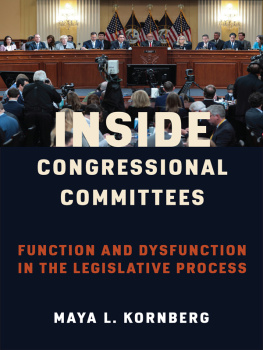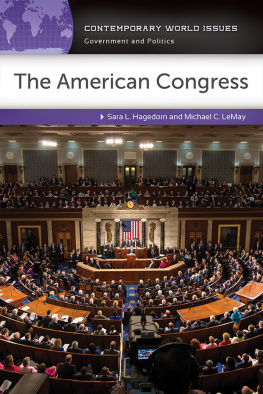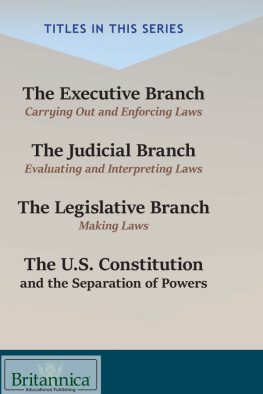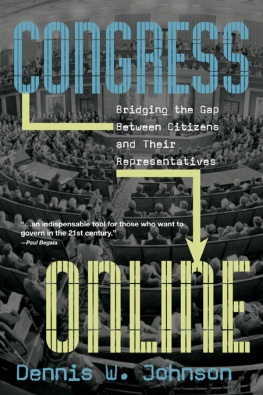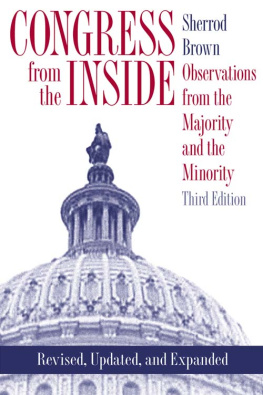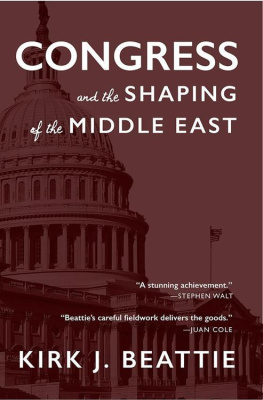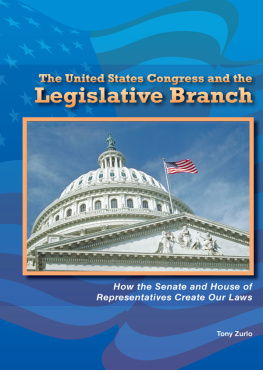INSIDE CONGRESS
A Guide for Navigating the Politics of the House and Senate Floors
T REVOR C ORNING
R EEMA D ODIN
K YLE N EVINS
BROOKINGS INSTITUTION PRESS
Washington, D.C.
Copyright 2017
THE BROOKINGS INSTITUTION
1775 Massachusetts Avenue, N.W., Washington, D.C. 20036
www.brookings.edu
All rights reserved. No part of this publication may be reproduced or transmitted in any form or by any means without permission in writing from the Brookings Institution Press.
The Brookings Institution is a private nonprofit organization devoted to research, education, and publication on important issues of domestic and foreign policy. Its principal purpose is to bring the highest quality independent research and analysis to bear on current and emerging policy problems. Interpretations or conclusions in Brookings publications should be understood to be solely those of the authors.
Library of Congress Cataloging-in-Publication data
Names: Corning, Trevor, author. | Dodin, Reema, author. | Nevins, Kyle W., author.
Title: Inside Congress : a guide for navigating the politics of the House and Senate floors / Trevor Corning, Reema Dodin, Kyle W. Nevins.
Description: Washington, D.C. : Brookings Institution Press, 2017.
Identifiers: LCCN 2016045229 (print) | LCCN 2016057111 (ebook) | ISBN 9780815727323 (paperback) | ISBN 9780815727347 (epub) | ISBN 9780815727354 (pdf)
Subjects: LCSH: United States. Congress. | LegislationUnited States. | BISAC: POLITICAL SCIENCE / Government / Legislative Branch. | POLITICAL SCIENCE / Government / National. | POLITICAL SCIENCE / Political Process / Political Parties.
Classification: LCC JK1021 .C68 2017 (print) | LCC JK1021 (ebook) | DDC 325.73dc23
LC record available at https://lccn.loc.gov/2016045229
9 8 7 6 5 4 3 2 1
Typeset in Caslon
Composition by Westchester Publishing Services
Contents
Acknowledgments
Special thanks to
Our families and loved ones for supporting us along the way.
Washington University in St. Louis
Marty Paone
Tom Wickham
Hon. Robert M. Carr
ONE
Introduction and Overview
Two Chambers, Two Ways
All legislative Powers herein granted shall be vested in a Congress of the United States, which shall consist of a Senate and House of Representatives.
U.S. Constitution, Article 1, Section 1
The Congress shall have Power To lay and collect Taxes, Duties, Imposts and Excises, to pay the Debts and provide for the common Defence and general Welfare of the United States; but all Duties, Imposts and Excises shall be uniform throughout the United States; To make all Laws which shall be necessary and proper for carrying into Execution the foregoing Powers, and all other Powers vested by this Constitution in the Government of the United States, or in any Department or Officer thereof.
U.S. Constitution, Article 1, Section 8
The first article of the United States Constitution vests law-making powers in the U.S. Congress and specifies that it is a bicameral, or two-chamber, legislature, with a Senate and a House of Representatives. Both chambers are located in the Capitol Building, in Washington, D.C. The two chambers of Congress reflect the both competing and complimentary ideas of elected officialsclosely representative and responsive to their constituents, as it is for House members, and heavily considerate of divergent ideas across large groups of voters, as it is for senators.
This basic difference in the makeup of the two houses of Congress determined other decisions the Framers made, such as the terms of office of representatives versus senators, the timing of elections, and many of the specific duties of each house of Congress. All of this is set forth in the first two articles of the Constitution. Despite some changes over the centuriesprobably the most significant being that senators are now elected via a popular vote within their respective statesthese distinctions have been reflected in the two chambers of Congress to the present day.
For each chamber the Constitution specifies certain duties and privileges. In addition, Article 1, Section 5, states, Each House may determine the Rules of its Proceedingshow they will actually do the work of making the laws of the land. The rules of each chamber have greatly evolved since the 1st Congress met, in ways that reflect the systemic and cultural differences of the two distinct bodies, and American history itself. As the business of the Congress evolved over the centuries, the rules the chambers made for themselves became more expansive. This complexity can cause confusion for those interacting with Congress and for those watching from afar and trying to understand the proceedings. Often the difficulty in working with Congress stems from a misunderstanding of why rules or procedures matter and how they are used.
A great deal has been written about Congress and its members, much of it complicated, procedural, or just plainly subjective. We aim to set forth in this volume a nonpartisan, straightforward view of the machinery that drives each of the two chambers of the American legislative branch. We hope that the terms, definitions, and explanations that follow give readers tools to help them understand why Congress operates as it does as they follow legislative ups and downs through television coverage, news articles, op-eds, or CSPAN. And that readers own critical views, now better informed as to what is going on, will make them more effective congressional watchers, staffers, or advocates.
We write with two overarching themes in mind. The first is that the two chambers are fundamentally different. The chambers differ markedly in the types of pressures on their members, the way they are run, and the ways their respective leaderships operate. All House members must stand for election every two years, and every two years a new House is formed. This shorter time frame means that representatives must keep their fingers on the pulse of their districts and even of their individual constituents. This shorter electoral horizon is meant to reflect the passions of the people.
Senators, by contrast, face reelection every six years, and challengers to a Senate seat have fewer chances and must wait longer to try to upset the status quo. In the Senate, change occurs more slowly. Members have longer to get to know one another and to work together than is the case in the House. That is why the Senate traditionally has been called the cooling saucer, where members have time to consider issues and are insulated from the passions of the moment. Yet there is great debate as to whether this remains the case in the modern Senate.
The size of the bodies also affects the rules and procedures in the two chambers to move legislation forward. The need to manage 435 representatives contributes to why the House is more clearly majoritarian ruled, in that the majority party calls the shots, and members often yield to the majority will. The Senate is more likely to accommodate the wishes of individual senators, and all 100 senators have extensive tools at their disposal to shape debate on the Senate floor. The Senate also provides the greatest continuity. Whereas the House changes every two years, and the president may change every four years, in the Senate two-thirds remains the same after any given election because only one-third of its members are up for election in each two-year election period.
The second overarching theme is that although the procedures of both chambers are relatively complicated, and the documents explaining them perhaps a bit cumbersome, on any given day the House and Senate are likely to use only a fraction of the procedures or maneuvers available. In other words, most of Congresss business is covered by a small number of the tools available. We do not cover every possible move and maneuver that an individual or a group of legislators might use hereand if you watch the floors long enough you will see some interesting and unusual things. Instead, we aim to explain to readers the main tools they need to understand in order to be informed watchers of the House and Senateto read the tea leaves of what is happening on each floor and understand the context well enough to follow along as each chamber goes about its floor work. Once you have a good understanding of the basics, texts that cover all of the possible maneuversincluding those rarely usedmay make more sense.
Next page

